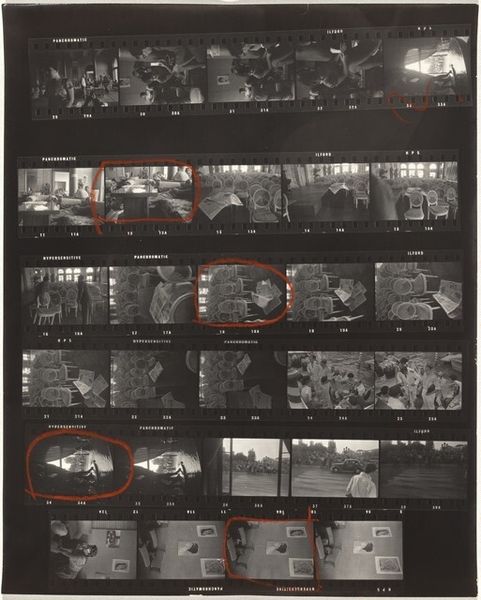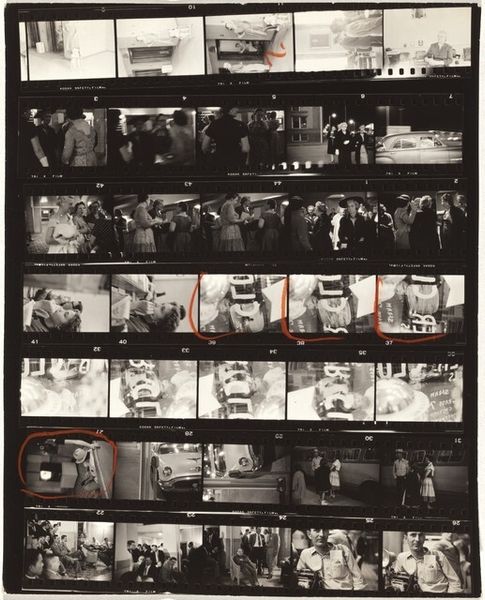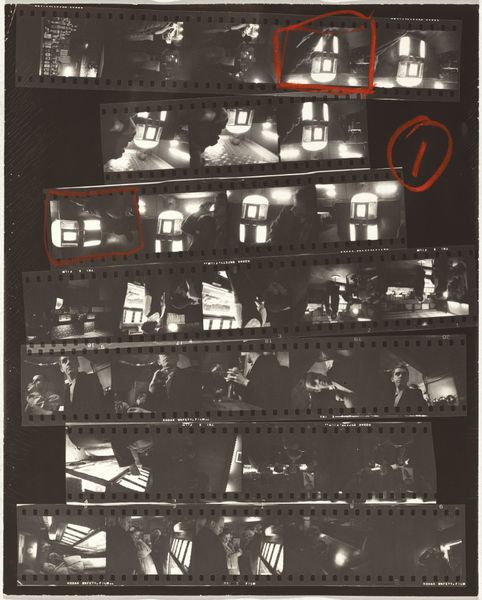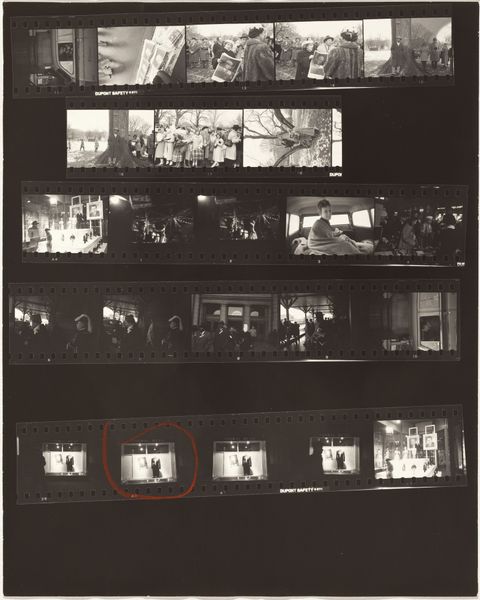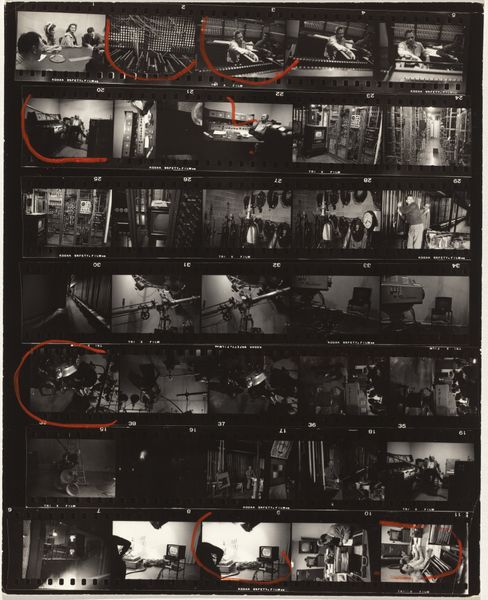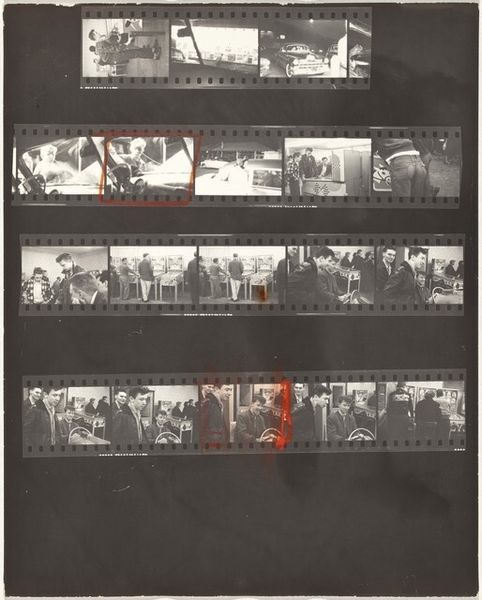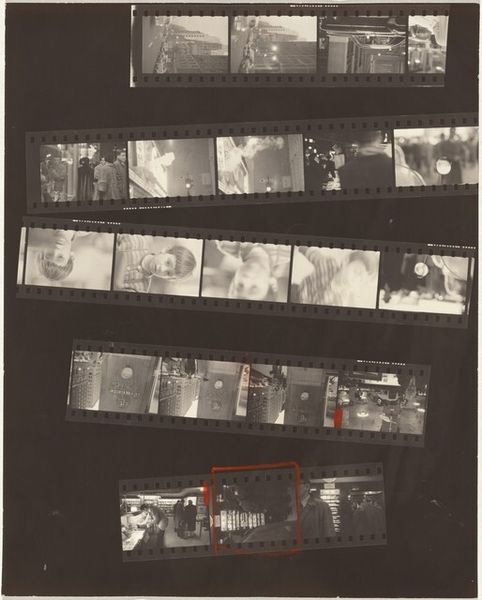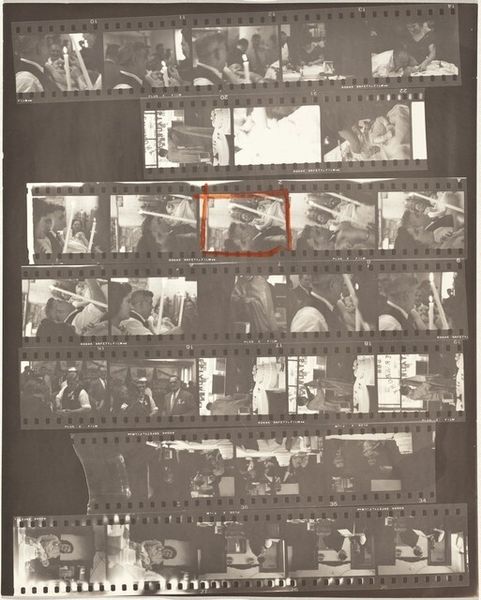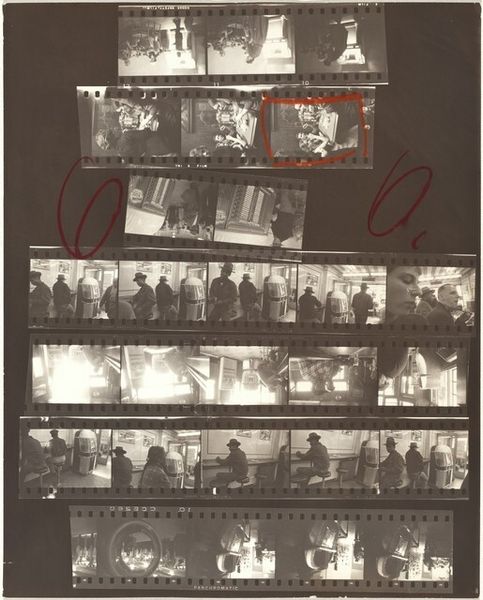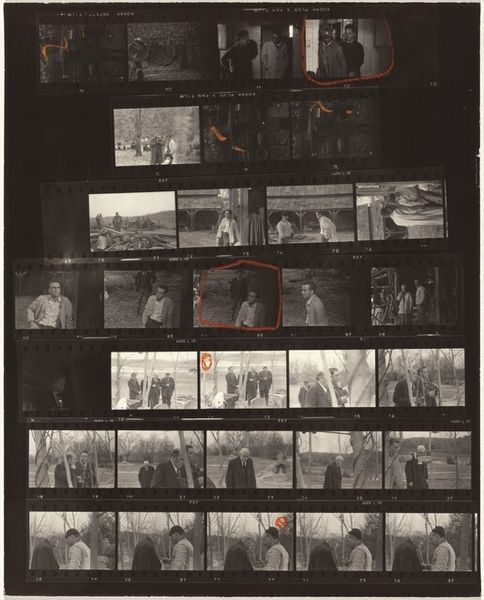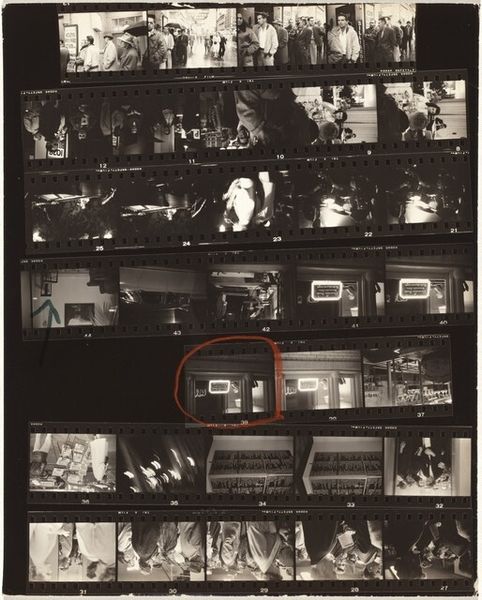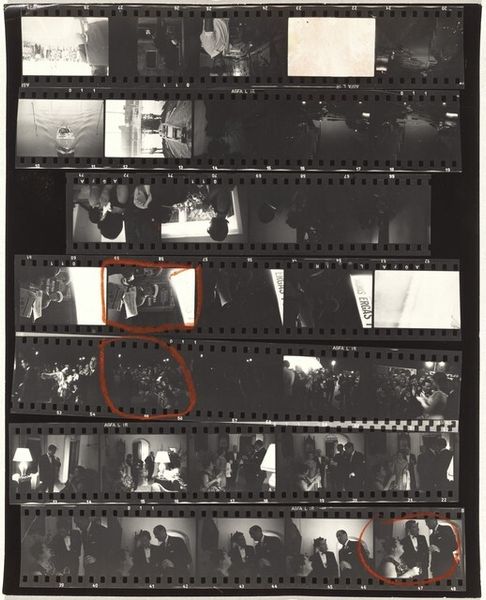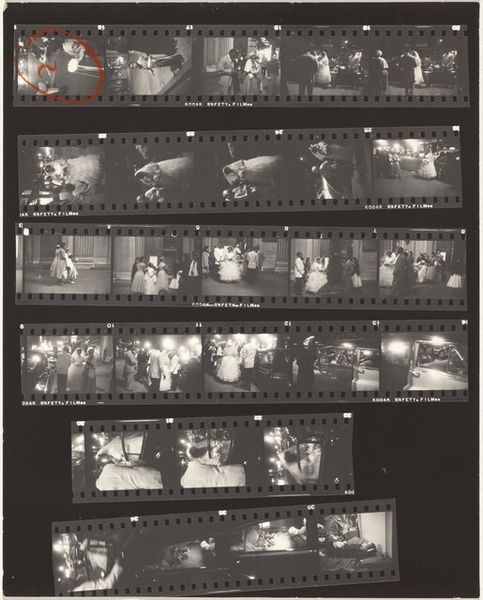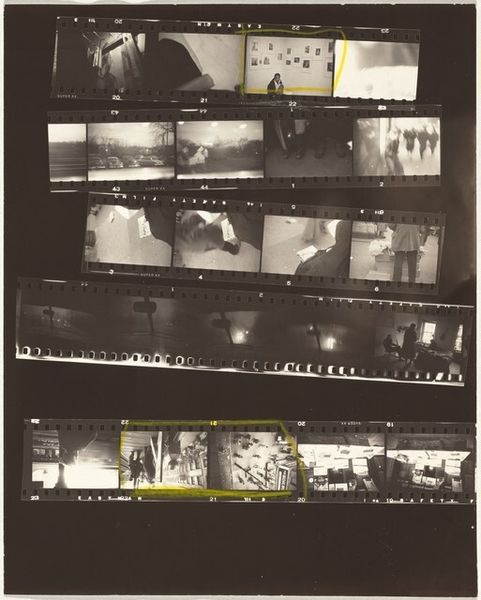
photography, gelatin-silver-print
#
excavation photography
#
portrait
#
street-photography
#
photography
#
gelatin-silver-print
#
pop-art
#
cityscape
#
modernism
Dimensions: overall: 25.3 x 20.5 cm (9 15/16 x 8 1/16 in.)
Copyright: National Gallery of Art: CC0 1.0
Curator: Here we have Robert Frank’s "Guggenheim 468/Americans 66--Hollywood," a gelatin silver print from 1956. The contact sheet showcases various scenes, seemingly candid moments, in Hollywood. Editor: It's gritty, raw. The immediate feeling is that of observation from the fringes—a kind of voyeuristic glimpse into celebrity and the spaces they occupy. The visual hierarchy implied by the marks on the sheet creates another layer to this idea. Curator: Precisely. Frank's work often challenged the idealized image of America. By showing a strip of film rather than isolated perfected shots, he disrupts the artifice that celebrity embodies. Think about how he captured those spontaneous street scenes, devoid of the usual Hollywood glamour. There’s a subversion of what it meant to be 'American' during the era. Editor: And look at the technical decisions: the high contrast and apparent blur contribute to that gritty feel. The actual film stock, its production and availability during that period, played a huge role in determining the picture’s aesthetic and reception too. Curator: It’s also interesting how Frank, a Swiss immigrant, brings an outsider's perspective to the quintessentially American topic of Hollywood. Consider the symbolic weight of figures like celebrities against the backdrop of social conformity during the 1950s. Are these selected scenes reinforcing or rebelling against existing visual culture? Editor: It really exposes the process of constructing imagery. We aren’t just seeing the finished product. We’re seeing the photographer’s eye at work, their own act of selection, the materiality of the photographic process itself—the film, the darkroom—and it democratizes the whole act of photography, stripping away any mystique. Curator: Absolutely, these images speak to broader anxieties about fame and American identity, viewed through the lens of cultural symbols and shifting social norms. Editor: And those technical choices become statements, turning a snapshot into a potent critique of that very fame. Seeing how the physical object reveals process helps demystify photography in itself. Curator: The cultural echoes reverberate even today. Editor: Indeed, its rawness maintains its radical feel even today.
Comments
No comments
Be the first to comment and join the conversation on the ultimate creative platform.
